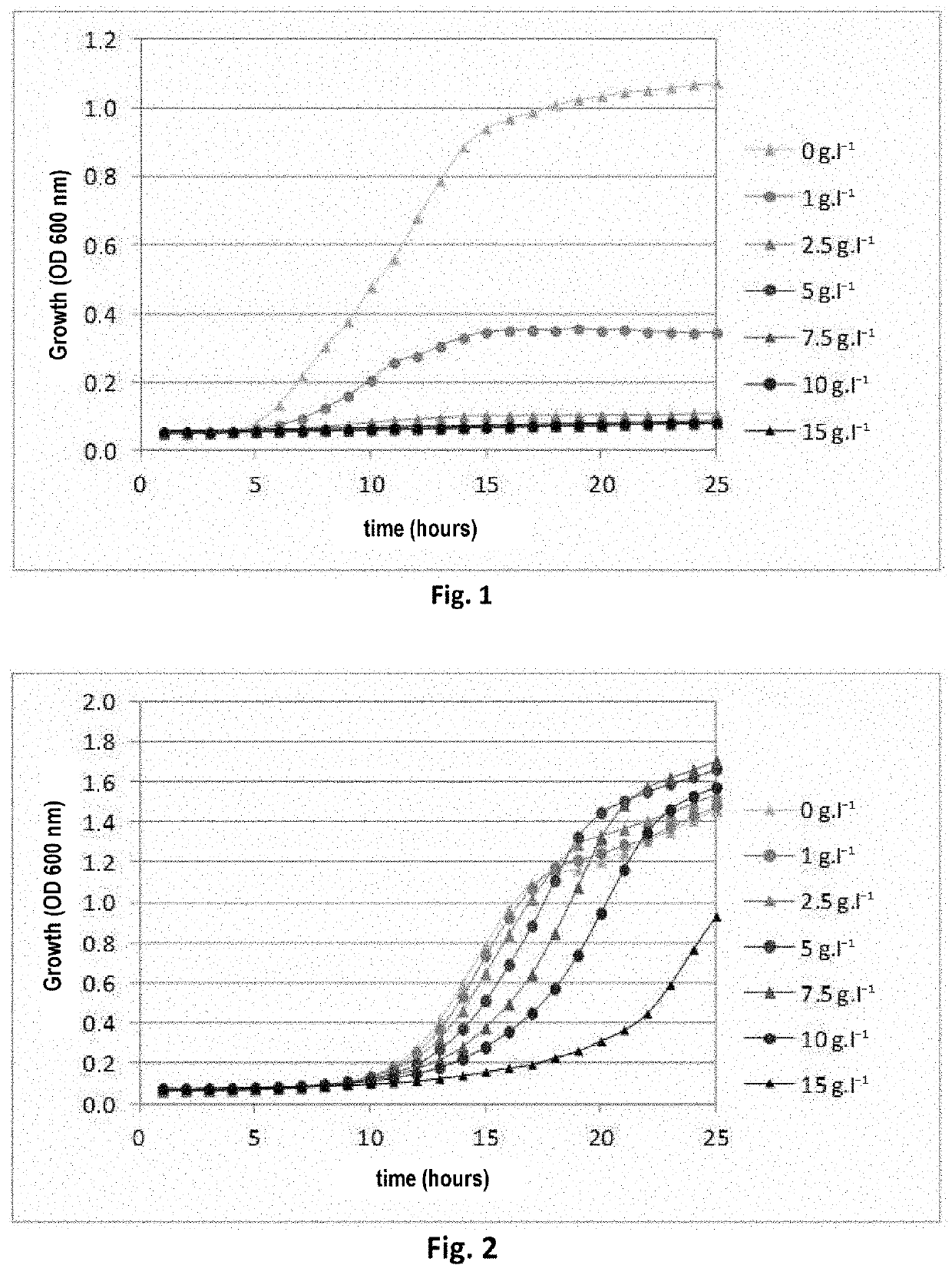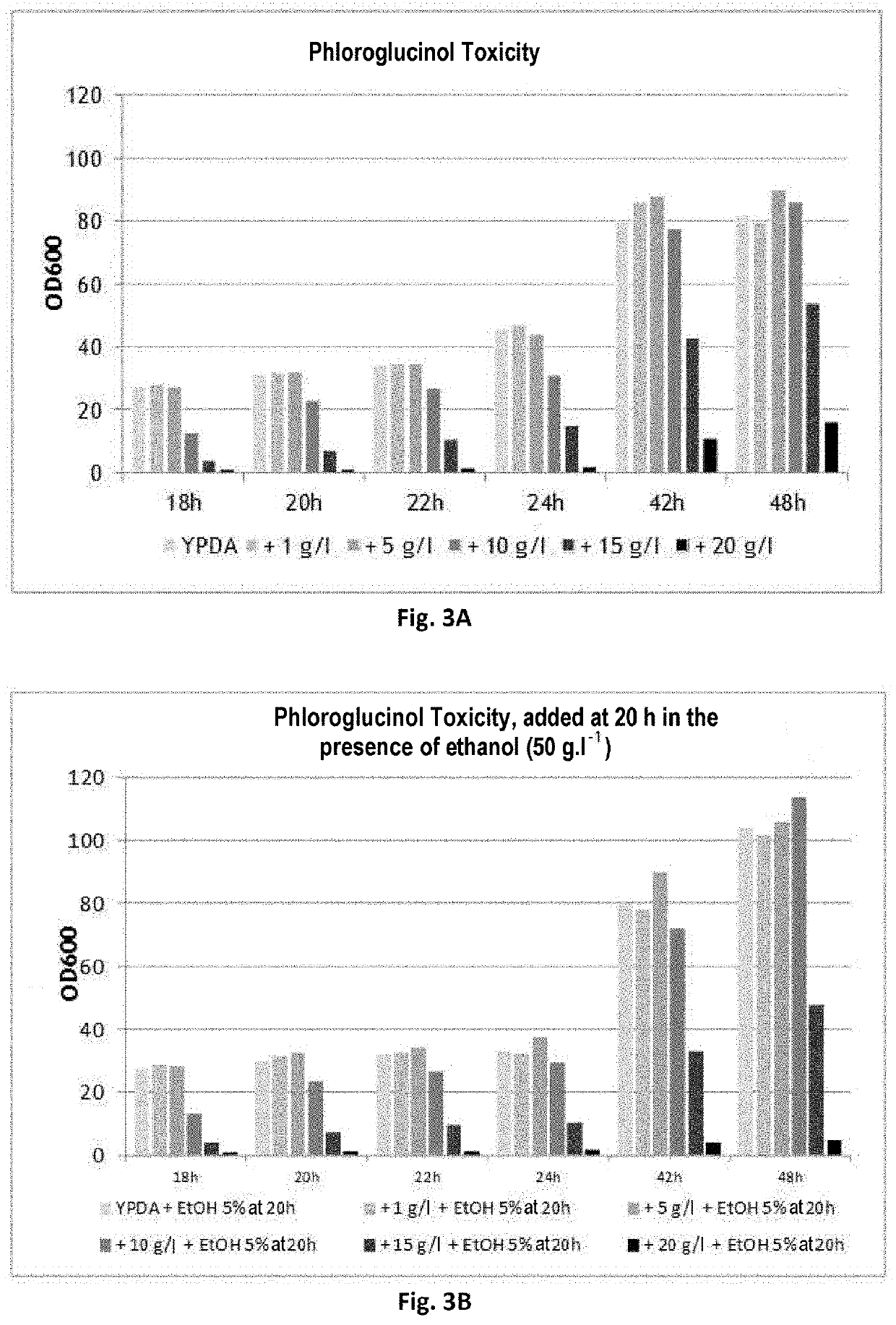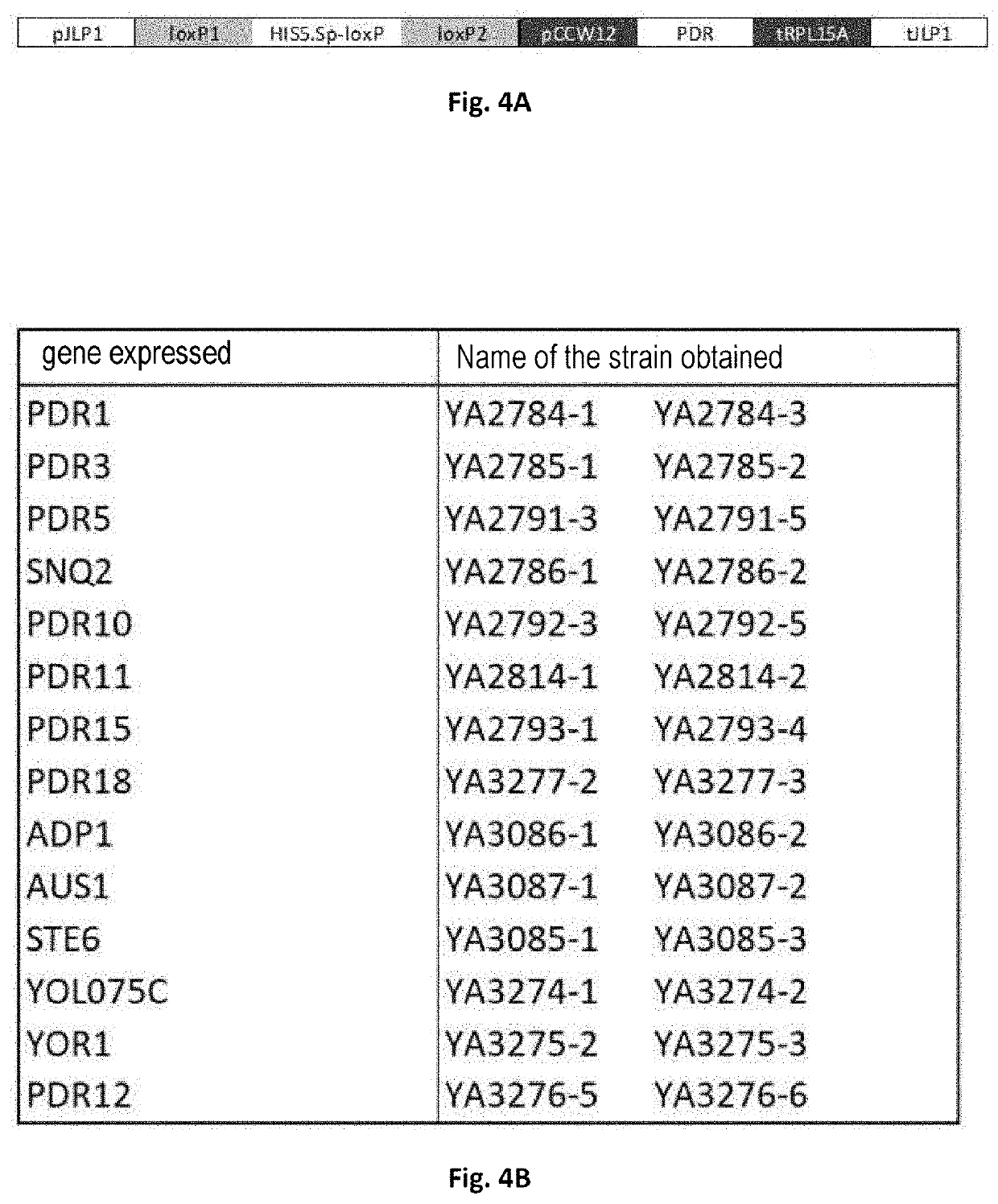Phloroglucinol-resistant cell, in particular yeast
a phloroglucinol and yeast technology, applied in the field of cellular biochemistry, can solve the problems of complicated setting up a high-yield industrial in vivo production system, and the toxic effects of phloroglucinol currently are barely studied in the literatur
- Summary
- Abstract
- Description
- Claims
- Application Information
AI Technical Summary
Benefits of technology
Problems solved by technology
Method used
Image
Examples
example 1
r Assaying Phloroglucinol
[0155]The method for assaying phloroglucinol was developed as detailed below. It comprises in particular a step of extracting the phloroglucinol, followed by a step of assaying by chromatography.
[0156]1.1 Phloroglucinol Extraction
[0157]The method was developed by using resorcinol as internal standard (IS). Various tests led to the development of a method of liquid-liquid extraction carried out at pH 4.0 in the presence of ethyl acetate as solvent, and with the aqueous phase being saturated with NaCl. The extraction is carried out for 30 min with circular shaking. The organic phase is removed and the ethyl acetate solvent is evaporated off under a stream of nitrogen N2 at 30° C. The dry extract obtained after complete evaporation is then taken up in a given volume of a 50%-50% ethanol / H2O mixture.
[0158]The extraction yield (YLD) was measured by mass spectroscopy after high pressure chromatography on a C18 column (dimensions: 100 mm×2.1 mm; particle size: 1.7 ...
example 2
n of the Toxicity of Phloroglucinol on the Bacterial or Yeast Cells
[0164]In order to know the threshold of phloroglucinol tolerance of bacteria or of yeasts, growth kinetics were prepared in the presence of various concentrations of phloroglucinol. These preliminary experiments aimed to evaluate their EC50.
[0165]The experiment was carried out in the following way. The phloroglucinol was dissolved at the concentration of 15 g·l−1 in complete medium (Yeast Extract 1%+BactoPeptone 2%) containing 2% glucose as carbon source (YPD medium). The culture media containing lower phloroglucinol concentrations were obtained by diluting this first medium in the same YPD medium containing 2% glucose.
[0166]In order to carry out the experiment, the wild-type yeast or bacterial cells were inoculated at an OD600 nm of 0.05 into the various media, thus containing, as soon as the cultures were started, either 0 (positive control for growth indicated C+), 1, 2.5, 5, 7.5, 10 or 15 g·l−1 of phloroglucinol....
example 3
ssion of PDRs and Measurement of the Effect on the Phloroglucinol
[0175]tolerance of the yeasts
[0176]3.1 Integration of Genes Encoding the Various PDRs in the Saccharomyces cerevisiae Yeast
[0177]The genes encoding the PDR proteins were amplified from yeast (W303-1A) genomic DNA by PCR (“polymerase chain reaction”) and cloned in plasmids. The accuracy of the sequence was verified by sequencing. The various genes encoding the PDRs were integrated into the genome at the JLP1 locus according to the structure described in FIG. 4A. Each strain constructed bears a YA number, and a library of 28 yeast strains overexpressing a PDR transporter was thus created, in a proportion of two clones per transporter.
TABLE 2Protein sequences of the PDR membrane transportersand transcription factors clonedProteinNCBI Ref.SEQ ID No.PDR5NP_014796.3SEQ ID No. 1SNQ2NP_010294.1SEQ ID No. 2PDR10PTN22535.1SEQ ID No. 3PDR11NP_012252.1SEQ ID No. 4PDR 12NP_015267.1SEQ ID No. 5PDR15NP_010694.1SEQ ID No. 6PDR18NP_014...
PUM
| Property | Measurement | Unit |
|---|---|---|
| Fraction | aaaaa | aaaaa |
| Fraction | aaaaa | aaaaa |
| Concentration | aaaaa | aaaaa |
Abstract
Description
Claims
Application Information
 Login to View More
Login to View More - R&D
- Intellectual Property
- Life Sciences
- Materials
- Tech Scout
- Unparalleled Data Quality
- Higher Quality Content
- 60% Fewer Hallucinations
Browse by: Latest US Patents, China's latest patents, Technical Efficacy Thesaurus, Application Domain, Technology Topic, Popular Technical Reports.
© 2025 PatSnap. All rights reserved.Legal|Privacy policy|Modern Slavery Act Transparency Statement|Sitemap|About US| Contact US: help@patsnap.com



